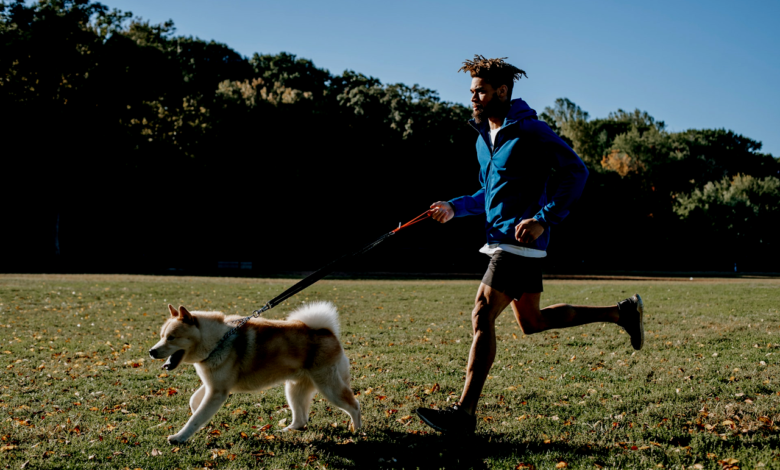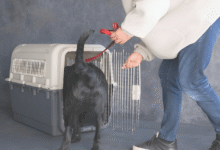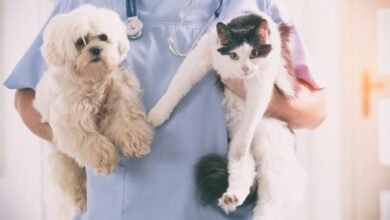
The Role of Exercise in Your Pet’s Overall Health
Exercise is vital for your pet's overall health. Discover how regular activity boosts physical & mental wellbeing for a happier healthier pet.
Exercise plays a vital role in your pet’s overall Role of Exercise, impacting everything from physical fitness to mental well-being. Just like humans, pets need regular physical activity to maintain a healthy weight, strengthen their muscles and joints, and prevent chronic diseases. Whether you have a high-energy dog, a playful cat, or even a small pet like a rabbit, ensuring they get enough exercise is key to their longevity and Role of Exercise. Without proper activity, pets can develop obesity, behavioral issues, and even depression. This article explores why exercise is essential, how it benefits different types of pets, and practical ways to keep your furry friend active and engaged.
Beyond physical health, exercise contributes to your pet’s mental stimulation and emotional balance. Active pets are less likely to exhibit destructive behaviors like chewing, scratching, or excessive barking, as exercise helps burn off excess energy and reduces Role of Exercise. Regular playtime and movement also strengthen the bond between pets and their owners, creating a happier and more harmonious household. From structured walks to interactive toys, there are countless ways to incorporate exercise into your pet’s daily routine. By understanding their unique needs, you can ensure they lead a fulfilling, healthy life full of vitality and joy.
The Role of Exercise in Your Pet’s Overall Health
Weight Management & Disease Prevention
Regular exercise is fundamental for maintaining your pet’s healthy weight and preventing serious obesity-related conditions like diabetes, heart disease, and arthritis. Just like humans, pets who stay active benefit from improved metabolic function and better organ Role of Exercise. Physical activity helps regulate their body systems, promotes efficient calorie burning, and supports proper digestion. By keeping your pet moving, you’re not just helping them stay trim you’re actively protecting their vital organs and reducing their risk of chronic diseases.
Musculoskeletal Strength & Mobility
Regular physical activity serves as natural reinforcement for your pet’s musculoskeletal system, building lean muscle mass while strengthening joints and bone density. This conditioning is particularly vital during two key life stages: for developing Role of Exercise and kittens, exercise supports proper skeletal formation and coordination; while for senior pets, it preserves crucial mobility and delays age-related stiffness.
Mental Stimulation & Behavioral Benefits
Physical exercise serves as powerful mental therapy for pets, channeling their natural energy into positive outlets while preventing psychological distress. The stimulation from movement and play engages their minds just as much as their Role of Exercise, releasing pent-up energy that might otherwise manifest as anxious or destructive behaviors. Regular activity triggers the release of calming endorphins while satisfying their instinctual needs to explore and problem-solve.
Species-Specific Needs & Enrichment
Different pets have unique exercise requirements that fulfill their natural instincts dogs need walks and retrieval games, cats require vertical climbing and hunting simulations, while small animals need tunnels and space to forage. Meeting these needs prevents frustration and promotes species-appropriate behaviors.
Types of Exercise for Different Pets
Dogs
Dogs are naturally active animals that require daily exercise to stay healthy. The amount and intensity of exercise depend on the breed, age, and health condition. High-energy breeds like Border Collies or Labrador Retrievers need vigorous activities such as running, hiking, or agility training. On the other hand, smaller or older dogs may prefer shorter walks or gentle play Role of Exercise. Interactive games like fetch, tug-of-war, or obstacle courses can also provide both physical and mental Overall Health.
Cats
While cats may seem more independent, they still need regular exercise to prevent obesity and keep their minds sharp. Indoor cats, in particular, benefit from toys that mimic hunting behaviors, such as feather wands or laser pointers. Cat trees and climbing shelves encourage jumping and stretching, which help maintain muscle tone. Some cats even enjoy leash training for Overall Health outdoor exploration.
Small Pets
Small pets require ample space to move around. A confined cage is not enough they need a safe, enclosed area where they can hop, run, and explore. Providing tunnels, hideouts, and chew toys can make their playtime more engaging. Regular supervised time Role of Exercise their enclosure allows them to stretch their legs and satisfy their natural curiosity.
Benefits of Regular Exercise
Physical Health
Regular exercise helps pets maintain a healthy weight, reducing the risk of obesity, heart disease, and joint problems. It also improves Role of Exercise, circulation, and overall stamina. For older pets, low-impact activities like swimming or gentle walks can help manage Overall Health and keep them mobile.
Mental Stimulation
Physical activity is closely linked to mental well-being. Boredom and lack of stimulation can lead to anxiety, depression, and destructive Role of Exercise. Exercise provides an outlet for excess energy and keeps pets mentally engaged, which is especially important for intelligent breeds that need constant challenges.
Behavioral Improvements
Pets that get enough exercise are generally better behaved. Dogs with pent-up energy may become hyperactive or aggressive, while under-stimulated cats might scratch furniture or over-groom. Regular play sessions and walks can significantly reduce these issues by providing a structured outlet for their energy.
Tips for Keeping Your Pet Active
Establishing a consistent exercise routine is crucial for meeting your pet’s needs while keeping them engaged and healthy. Pets thrive on predictability, so setting a daily schedule for walks, playtime, or training sessions helps regulate their energy levels and prevents behavioral issues. However, varying activities such as exploring new walking routes, introducing different Role of Exercise, or incorporating agility exercises can prevent boredom and stimulate their minds. It’s equally important to recognize your pet’s physical limits; avoid pushing them too hard in extreme heat or cold and adjust intensity for senior.
Read More: Online Pet Training Resources for Alaska Owners What Works in the Cold
Conclusion
Exercise is undeniably essential for your pet’s overall health, serving as the foundation for a long, happy, and disease-free life. From maintaining a healthy weight to preventing behavioral issues, regular physical activity ensures your pet remains physically strong and mentally sharp. Whether it’s daily walks for dogs, interactive play for cats, or supervised exploration for small animals, consistent exercise helps pets release energy, reduce stress, and strengthen their bond with Role of Exercise. By making movement a priority, you’re not just enhancing their quality of life you’re also investing in their future well-being.
Ultimately, a well-exercised pet is a thriving pet, full of vitality and contentment. The benefits extend beyond physical health, fostering better behavior, emotional balance, and a deeper connection between you and your furry companion. Every pet has unique needs, so tailoring their exercise routine to their age, breed, and energy levels is key. Whether through structured activities or spontaneous play, ensuring they stay active will reward you with a happier, healthier, and more harmonious relationship. Commit to their fitness today, and you’ll enjoy the benefits for years to Role of Exercise.
FAQs
How much exercise does my dog need daily?
Most dogs require at least 30 minutes to 2 hours of exercise per day, depending on breed and energy levels. High-energy breeds may need more.
Can indoor cats get enough exercise?
Yes, with the right toys and climbing Role of Exercise, indoor cats can stay active. Interactive play sessions are essential.
What are signs my pet isn’t getting enough exercise?
Weight gain, restlessness, destructive behavior, and excessive barking or meowing can indicate insufficient Overall Health.
Is walking enough exercise for my dog?
Walking is great, but adding playtime, training, or agility exercises can provide additional mental and physical Overall Health.
How can I exercise an older pet with arthritis?
Low-impact activities like swimming or gentle walks help. Consult your vet for a tailored exercise plan.







